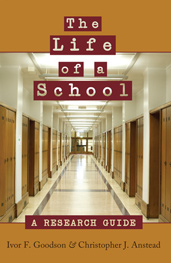The Life of a School
Studying the Life of a School
Once you have found your critical event, you must give some thought to justifying your choice. Probably the most obvious way to justify the choice of a particular event is to be able to point to significant long-term results. An event which changed the history of a school in a meaningful way should be obvious to all. If this is not true at a surface level, it is up to you to make it readily apparent to your readers. History provides us with hindsight—this is not just a truism, it is a powerful tool. Use it to judge the importance of events. Experiential analysis can also provide justification for your claims. If oral accounts suggest that the experiential nature of your school changed significantly at the time of your chosen event, this is compelling evidence.
Writing Critical Events Narratives
A crucial element in the telling of critical events narratives is the time spent setting the stage. For the meaning of a change to be understood, what went before must be shown. The constraints on actors, the structures of institutional life, the role of tradition—all of these pre-existing elements provide fodder for interpretation (Kincheloe, 2004, 2005; Kincheloe & Berry, 2004; Kincheloe & Steinberg, 2007).
Once you move into an examination of the particular incident, you must make sure you tell all sides of the story. A narrative of an event from the point of view of a single source is nothing more than chronicling. Instead, your job is to find the common ground and points of convergence among sources. You must attempt to oversee the conflicting tales and construct what you can from them. Your construction will probably not be able to take account of all interpretations, and you must mention those sources which provide versions incommensurable with your own narrative.
Event-based history tends to emphasise the role of heroes. Men (too often in the past, mystical “gentlemen”) and women who acted in the context of their times to produce change, or react to it, provide the narrative impetus behind events. To be effective, the actors have to be present as rounded people, not mere caricatures of interested groups. In crafting an events-based history, then, you must be aware of the subtle nuances of personal history. People are not all self-aware, logically acting, unconstrained individuals. Instead, they are only partially aware of both their own motives and subconscious knowledges and the surrounding structures. They may act in ways which seem to contradict a rational assessment of their own interests. They constantly operate under an intricate network of constraints that stretch from their own sense of self, through social norms, to the regulatory apparatus of the state (Goodson & Lindblad, 2010).
